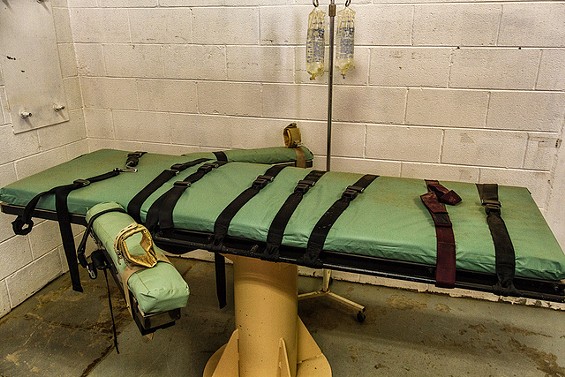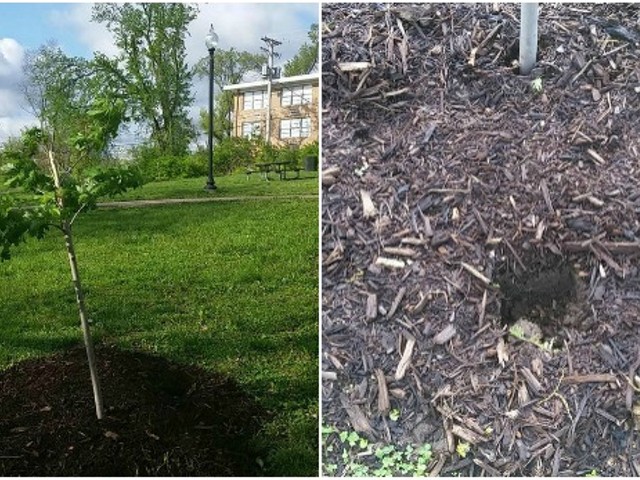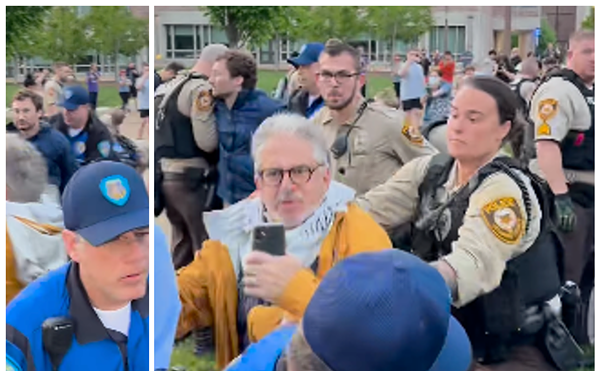On Saturday, the FBI and the U.S. Department of Justice made a stunning admission: A team of their scientists had used flawed science for years, then testified against defendants in hundreds of criminal trials using their erroneous conclusions. The FBI found that 26 of its 28 examiners in the "microscopic hair analysis unit" gave overstated testimony in 268 trial cases, and that 96 percent of the time that testimony favored the prosecution. The cases took place between 1972 and 1999.
The defendants in 32 of the cases received a death sentence. Of those, 12 have already been executed. One of those took place in Missouri.
The FBI is still completing its review, but Tricia Bushnell, legal director of the Midwest Innocence Project, says the bad science the FBI used for decades has likely trickled down into Missouri's local forensic labs.
"State analysts are doing what the FBI taught them to do, and so we'll have to review those cases as well," she says. "Our regional crime labs went to these trainings taught by the FBI."
Though "forensic hair analysis" sounds highly scientific, the means by which some examiners determined that hairs found at crime scenes belonged to either perpetrators or victims was sometimes anything but.
Hair analysis got started in the 1950s, and examiners used both the naked eye and microscopes to catalog attributes like color, texture, weight, width, etc. But a 2012 Washington Post investigation revealed that examiners had wildly different standards of how many shared attributes between samples constituted a match. Some required 20 to 30 similarities; others, a half dozen.
In one particularly egregious case, a man was convicted for a rape after the examiner used hair evidence to describe the hair as black and from a human head. Based on that, the scientist told a jury the hair was "indistinguishable" from the defendant's. A DNA test of the hair and semen from the scene decades later proved the man was innocent -- after he'd already served twenty years in prison.
Post-2000, hair samples were also tested for DNA. And finally, in 2012, the FBI handed down a set of strict guidelines to its examiners on what constitutes a match.
At present, it's not clear in which capital case the FBI is acknowledging that its scientist gave flawed testimony in Missouri. Two men who were recently executed had cases involving forensic hair evidence: Michael Taylor and Walter Storey. Taylor was convicted of raping and murdering a fifteen-year-old girl, Storey of raping and murdering his neighbor. In both cases, other evidence was used to gain the conviction, so it isn't clear how crucial the hair evidence may have been.
Taylor was executed on February 26, 2014. Storey was executed on February 11, 2015.
Update: According to documents obtained by the Post-Dispatch, the executed man referenced in the FBI's report is Jeffrey Ferguson. He was executed in March 2014 for the murder of 17-year-old Kelli Hall in 1989.
While the FBI's review shows that flawed testimony was given in Missouri in two federal cases and four state cases, Bushnell says that's just the tip of the iceberg.
"There are a number of more cases in the states themselves they've not reviewed," she says.
When the Midwest Innocence Project receives applications for review from prison inmates, they are cataloged by the type of potentially problematic or flawed evidence used to gain a conviction. Bushnell says they currently have 70 cases that involve hair analysis. Of those, a vast majority -- 50 -- are from Missouri.
"Part of it could be, for example, because Missouri just did more hair analysis, latched onto that," she says. "It's hard to know."
It should be said that in these 50 cases, hair analysis was admitted into evidence and used in testimony at trial, it doesn't necessarily mean that the hair was the key piece of evidence entire convictions rest on.
But Bushnell says they have an obligation to find out whether the evidence was presented falsely in dozens of local cases. She hopes that the FBI's willingness to admit fault will influence local prosecutors to cooperate.
"Everybody wants to catch the bad guy. Everyone really wants justice...it's certainly not [the examiners'] fault that they do what they were taught to do," she says. "We're all human. We all make mistakes. We just need to fix them."
Email the author at [email protected].






